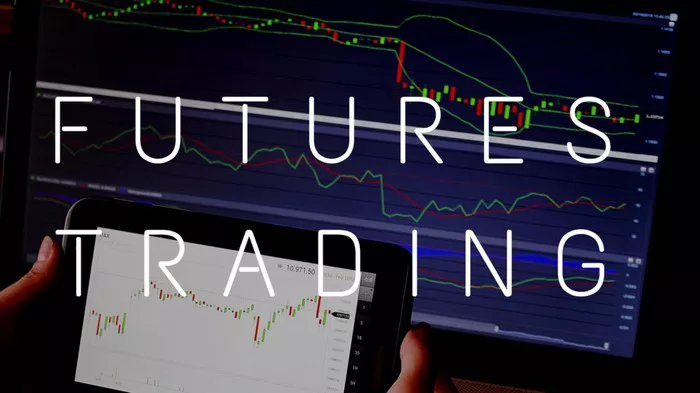Trading futures can be an exciting and potentially lucrative venture, but it’s crucial to approach it with careful planning and consideration, particularly when it comes to determining how much capital to allocate to your trading endeavors. Your starting capital can significantly impact your trading experience, risk management strategies, and overall success in the futures markets. In this comprehensive guide, we’ll explore various factors to consider when deciding on your initial investment amount and provide practical tips to help you make informed decisions.
Understanding the Basics
Before delving into the specifics of determining your starting capital, it’s essential to have a solid understanding of what futures trading entails. Futures contracts are financial derivatives that obligate the buyer to purchase, and the seller to sell, a specific asset (such as commodities, currencies, or financial instruments) at a predetermined price and date in the future. Futures trading offers traders the opportunity to profit from price movements in these underlying assets without actually owning them.
Factors to Consider
Several factors should influence your decision regarding how much money to allocate to futures trading. Consider the following key points:
1. Trading Objectives: Define your trading objectives clearly. Are you looking to generate supplemental income, grow your savings, or pursue trading as a full-time career? Your goals will dictate the level of commitment and capital required.
2. Risk Tolerance: Assess your risk tolerance carefully. Futures trading involves inherent risks, including the potential for substantial financial losses. Determine how much risk you’re comfortable with and tailor your capital allocation accordingly.
3. Trading Strategy: Your chosen trading strategy will influence your capital requirements. Different strategies, such as day trading, swing trading, or trend following, may necessitate varying levels of capital to execute effectively.
4. Asset Class: Consider the specific futures contracts you intend to trade. Different asset classes have varying levels of volatility and margin requirements, which can impact the amount of capital needed to initiate and maintain positions.
5. Costs and Fees: Factor in the costs associated with futures trading, including commissions, exchange fees, and margin interest. These expenses can erode your profits and should be accounted for in your capital allocation.
6. Market Conditions: Be mindful of prevailing market conditions and volatility levels. Highly volatile markets may require larger capital reserves to accommodate wider price swings and mitigate the risk of margin calls.
7. Trading Experience: Your level of trading experience also plays a crucial role. Novice traders may opt to start with smaller capital amounts until they gain proficiency and confidence in their trading abilities.
Determining Your Starting Capital
Now that we’ve outlined the key factors to consider let’s explore how to determine your starting capital for futures trading:
1. Assess Your Financial Situation: Begin by evaluating your current financial position, including your savings, income, expenses, and existing investments. Avoid allocating funds earmarked for essential living expenses or emergency savings to futures trading.
2. Establish Risk Management Guidelines: Develop a comprehensive risk management plan that outlines your maximum acceptable loss per trade, per day, and overall account. Your starting capital should be of sufficient size to accommodate these risk parameters while allowing for potential drawdowns without jeopardizing your financial security.
3. Calculate Margin Requirements: Familiarize yourself with the margin requirements for the futures contracts you intend to trade. Margin is the collateral required to initiate and maintain positions, and it varies depending on factors such as contract size, volatility, and exchange regulations. Ensure that your starting capital exceeds the initial margin requirements for your planned trades to avoid margin calls and forced liquidations.
4. Consider Position Sizing: Implement prudent position sizing techniques to manage risk effectively. Avoid risking more than a small percentage of your total trading capital on any single trade, typically ranging from 1% to 3%. Calculate the maximum position size based on your risk tolerance, stop-loss levels, and account size.
5. Account for Trading Costs: Factor in trading costs such as commissions, exchange fees, and slippage when determining your starting capital. These expenses can vary significantly depending on your broker and trading volume, so it’s essential to account for them in your capital allocation.
6. Start Small and Scale Up: If you’re new to futures trading or unsure about your trading strategy, consider starting with a smaller initial capital allocation. This approach allows you to gain experience, test different strategies, and refine your risk management techniques without risking large sums of money upfront. As you become more proficient and confident in your trading abilities, you can gradually increase your capital allocation.
7. Monitor and Adjust: Continuously monitor your trading performance and adjust your capital allocation as needed. If you consistently achieve positive results and demonstrate effective risk management, you may consider increasing your trading capital over time. Conversely, if you experience significant losses or drawdowns, reassess your risk parameters and consider reducing your position sizes or overall exposure.
Conclusion
Determining how much money to start trading futures requires careful consideration of various factors, including your trading objectives, risk tolerance, strategy, market conditions, and financial situation. By assessing these factors thoughtfully and adhering to sound risk management principles, you can establish an appropriate starting capital allocation that aligns with your goals and minimizes the potential for financial loss. Remember to start small, focus on consistent performance, and continuously evaluate and adjust your approach as you gain experience in the dynamic world of futures trading.


